5.6: Quiet on set
What the section 5.5 nicely leads us into is that often the most convincing thing about these films is the Apollo photography. What, however, about the films that when they didn’t use Apollo imagery made up their own?
There are those people in the conspiracy movement who argue that it was actually Hollywood that did the faking, that it was all special effects and clever secret stuff. Usually it involves Stanley Kubrick. So perhaps now is a good time to look at the standard of those special effects and whether they are up to the job.
To kick off this section let’s again look at Star Trek, specifically the 1966 episode ‘Miri’.
Miri was either a cloned Earth or a parallel Earth, or even actually Earth, depending on which website you read, but there is no doubt that our own Earth was the backdrop used in the special effects. Some screenshots from the episode are given below in figure 5.6.1.
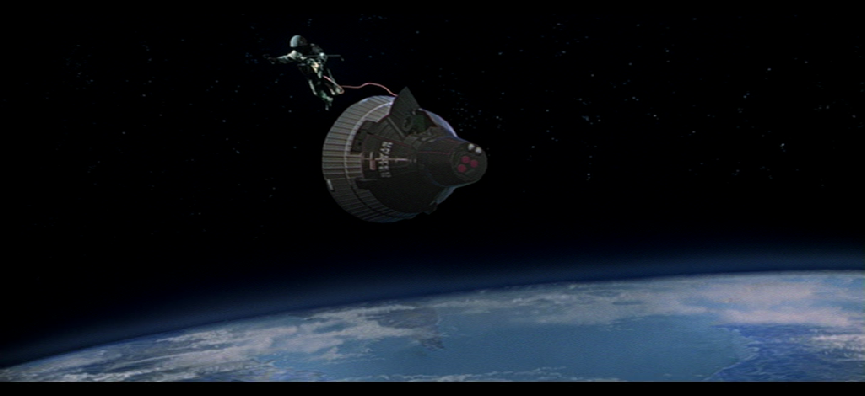
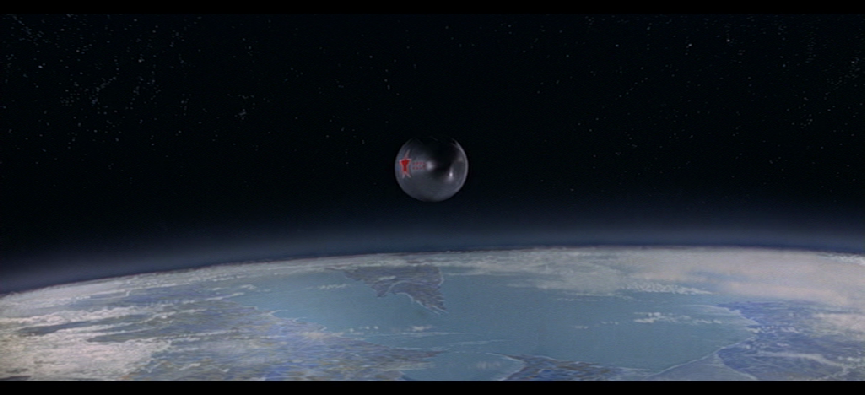
Figure 5.6.3: Screenshots from ‘You only live twice’ compared with Gemini 7
The most obvious feature here is that the two shots contain the same land masses, but you’d be hard pressed to identify which land masses they are!
To be fair, the actual depiction of Earth isn’t too bad, but you would have to be short sighted to argue that it is completely realistic.
The surface is perhaps not bright enough, and the clouds are not quite right, but they have attempted to draw in an atmosphere and the clouds have a three dimensional aspect to them. Almost as if they were basing their view on precisely the kind of Gemini image I’ve used above.
It still, however, has that indefinable ‘something not quite right’ about it, particularly the two space capsules which look completely two dimensional, and given where the light is supposedly coming from the shadows on the capsules seem a little out. It’s even less convincing when viewed as a film rather than a still from a film.
It feels slightly unfair putting the next entry into our hall of fame of unrealistic Hollywood portrayals of space missions, given that much of it is actually very well done. Robert Altman’s 1968 release ‘Countdown’ (coincidentally the title of Apollo 8 commander Frank Borman’s autobiography). The plot centres around the race to the moon with the USSR and a hurried launch with a man to try and pre-
The film uses a Gemini image to depict the view from Earth orbit, and uses lots of detailed lunar photographs to depict lunar orbit seemingly from the 1967 ‘Consolidated Lunar Atlas’ compiled from high power terrestrial telescopes (figure 5.6.4).
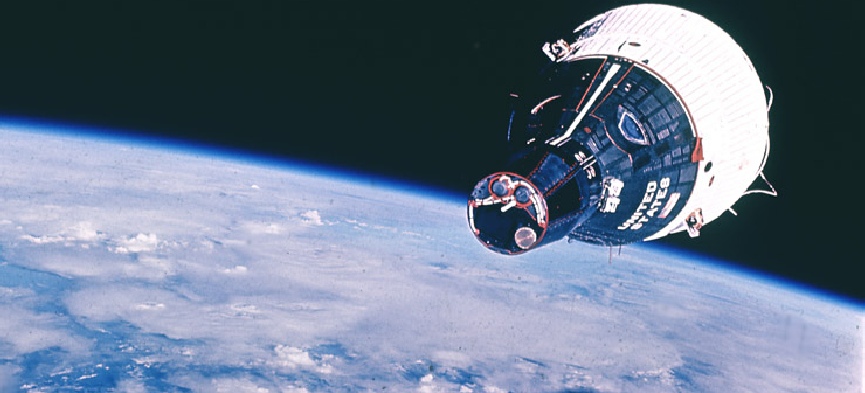

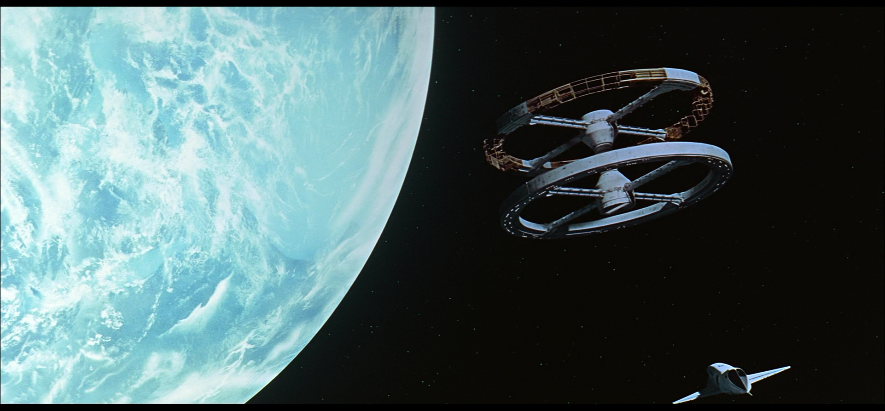
Figure 5.6.6: Screenshots from 2001: A Space Odyssey
When you compare this with the rather dull looking Earth from YOLT, this is certainly an improvement, but is it good enough? Once again we have pretty unidentifiable looking land masses and you’d be hard pressed to say where we were supposed to be above the Earth.
Kubrick may have paid a lot of attention to the brightness of the Earth in the shot, but his choice of colour is not there at all -
To be fair, some parts of the planet do look like that, and the artist probably took his cues from photographs taken during the Gemini and Mercury missions supplied to Kubrick by NASA, to which (to be fair) the images do bear some resemblance. You might want to look at MA-
The appearance of Earth against a lunar backdrop is similarly confused (figure 5.6.7).
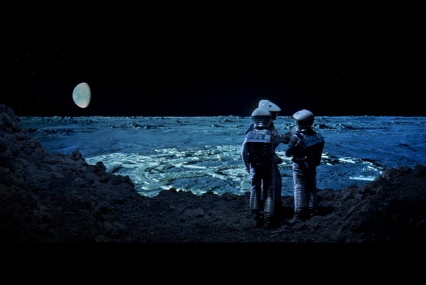
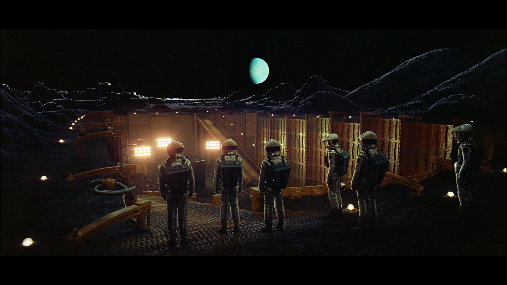
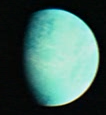

Figure 5.6.7: Earth from ‘2001’
Leaving aside the fact that Earth is impossibly low on the horizon considering where it is allegedly being viewed from, and the rapid change in phase, where is the detail? Where are the weather systems and continents that we know should be visible even from early unmanned probes? Kubrick has designed a set based on what is artistically correct rather than scientifically accurate, just as his lunar sets favoured dramatic licence over accuracy.
How can it be so inaccurate? One answer is that we really didn’t know what the Earth as a whole disc actually looked like from space -
The other is that it is a mere backdrop to the main action -
The next film I want to look at had no such excuse. The 1969 film ‘Marooned’ won an Oscar for visual effects and does a creditable job of recreating Mission Control procedures and language. They used an early Apollo command module, mock-
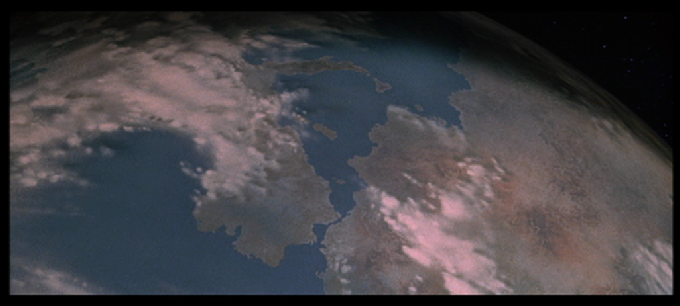
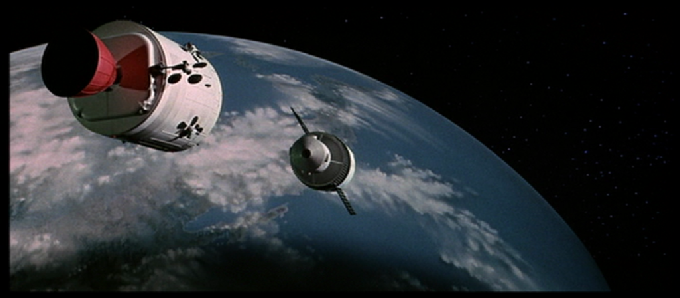
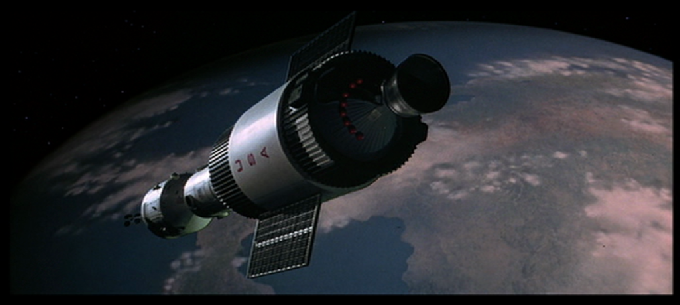
Figure 5.6.8: Screenshots from ‘Marooned’
OK, so the models look good and they are lit correctly but the Earth is not in the least bit realistic. You have to ask whether the special effects guys had access to any kind of map while they were building their Earth, as the coastlines are pretty much vague approximations of the real thing. Nice fluffy clouds, but there is no variety in them and no real sense of any kind of weather system.
As before, the focus of the film makers here is not to create a faithful reproduction of Earth, but to depict how two space craft move together. Earth is a backdrop not the main event.
Later in 1969 (or early in 1970 depending on where you lived) we have the release of a truly awful piece of what can only be described as ‘cashing in on the whole Moon thing’ n the form of ‘Moon Zero Two’. Despite managing to use a genuine image of Earth from ATS-
As can be seen in figure 5.6.9b it couldn’t even get the Earth’s phase right in the space of a few shots, never mind get anything like a realistic representation of the Earth’s surface.
Figure 5.6.15: Moon scene from ‘Superman II’ (left), with close up of Earth (right).
The schoolboy error they make is, of course, that the image of the moon is ingrained in the modern consciousness thanks to Apollo. Many TV and film writers rely on that cultural meme and cut corners with grey landscapes, dust, slow motion, and an image of Earth in the sky. Because these things are backdrops to the main action, most people don’t pay enough attention to them to notice that they’re often hopelessly wrong.
The Apollo deniers who claim it was all done in a studio also fail, routinely, to produce any evidence of where the studio was (other than vague gesticulations at ‘Area 51’) who built it, who crewed it, where the materials were made and who transported them, who assembled the footage and so on and so on and so on. The bald statement ‘it was faked in a studio’ is, apparently, enough for them without any requirement to provide supporting evidence.
So there we have it, several big budget films and TV series (and some cheaper ones) containing views of Earth released around the time of Apollo, and not one of them produces a convincing and 100% accurate rendering of our blue marble.
Generally speaking then, the conclusion here is that rather than Hollywood special effects being used to re-
Figure 5.6.12: Earth used in the 6 Million Dollar Man pilot.
Clouds are not sharp, the terminator line is at an odd angle and place, the night portion is still visible, which it would not be, and the lunar lighting is all wrong.
You could argue that we are only taking our visual cues of what Earth should look like from the very photos that the anti-
The truth is that the special effects of the time, and the understanding of how Earth looked from space, were very much in their infancy. Film makers had neither the technical know-
Likewise the lunar surface and depiction of low gravity in 1979’s ‘Salvage 1’ (examined in the previous section), were pretty dreadful and despite using the Blue Marble image in a few places they opted for a reproduction Earth (figure 5.6.13) which, to be fair, isn’t actually that bad and the version shown on the right bears a strong resemblance to AS15-
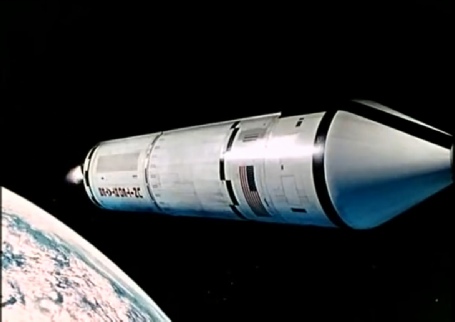
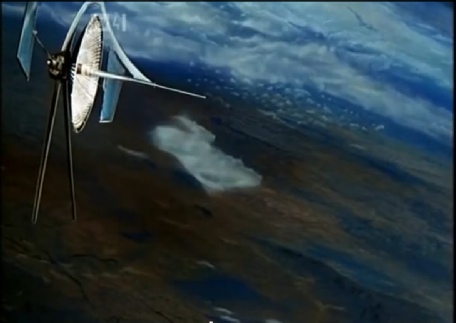
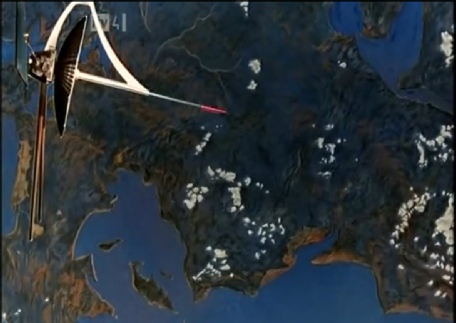
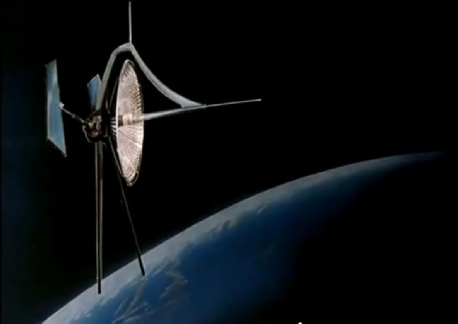
Figure 5.6.10: Screenshots from ‘Diamonds are forever’
To be fair, the one in the top left does have a reasonably convincing look to it, but I’ve not been able to track down any Gemini or Apollo image that might be the source. The other three, on the other hand, show the same completely unrealistic portrayals of the Earth. Ironically, the most convincing view of the planet comes from the fake moon set used in the film, and figure 5.6.11 shows a screenshot from it.
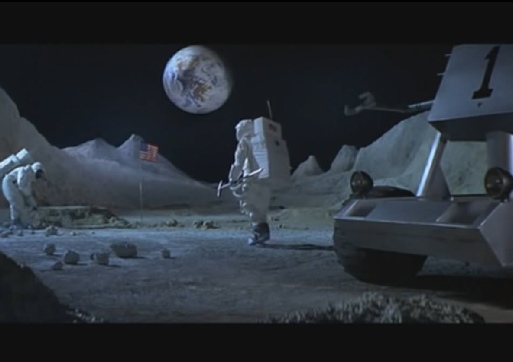
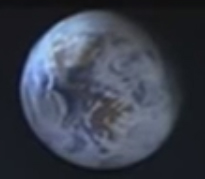
It’s not entirely fair to focus on low budget TV series, so let’s look at big budget Hollywood The 5th film in the James Bond franchise was ‘You Only Live Twice’, and was released in 1967. While this predates Apollo it was filmed during the Gemini missions, and used a Gemini launch sequence in place of a Russian launch, and what is clearly a Gemini capsule in the US space sequences.
What we need to see, however, is Earth -
Figure 5.6.1: Screenshots from ‘Star Trek: Miri’.
I’m assuming I don’t have to point out the obvious here. Even though the episode aired in October 1966 amidst a flood of mercury and Gemini images showing the most beautiful cloud patterns around, there is not a single one to be seen here. They managed to get a nice convincing globe, even had it rotating as they approached, but forgot to put clouds in. A later re-
Yeah yeah I know, it wasn’t actually Earth, but it’s a water planet -
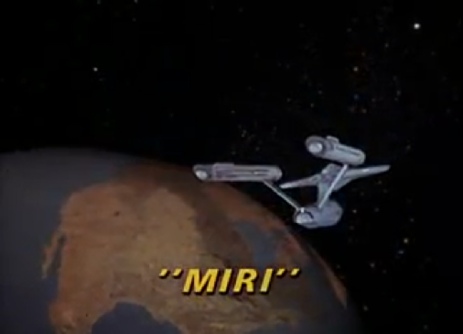
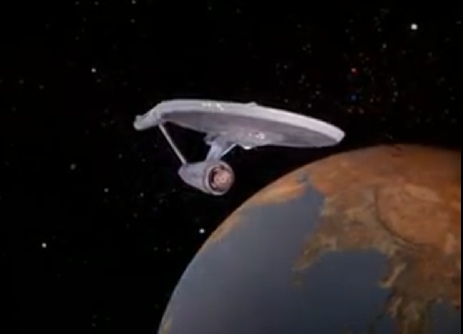
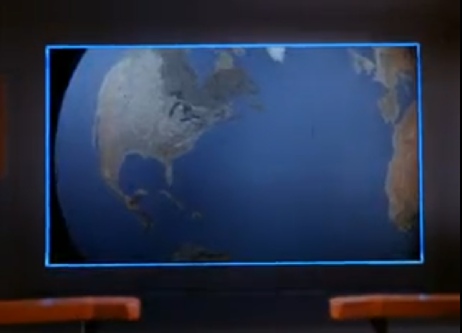
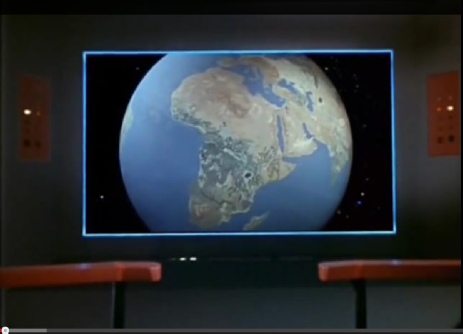
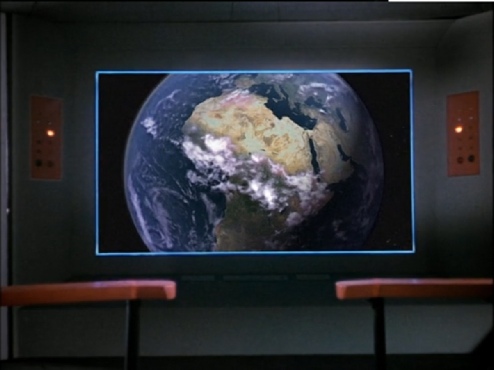
Figure 5.6.2: Re-
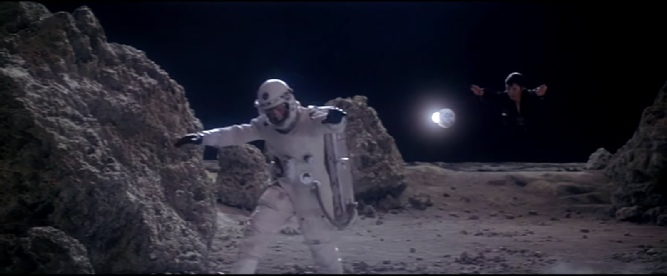
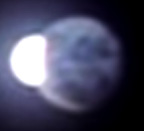
Figure 5.6.11: The fake moon set from ‘Diamonds are forever’
I can hear conspiratards shouting about how they are shoving it in our faces from here! It’s not a bad Earth, but it obviously isn’t real, and while it isn’t supposed to be there are still issues with lighting (the moon should be dark given the Earth’s phase. Again it seems to bear more similarities with the ATS-
Film and TV that do well at an aspect of space often don’t do well in another. While Star Trek didn’t do too well over two different episodes, the 6 million dollar man slips up in the same programme. It made good use of NASA footage in the episode examined in the previous section, but when it came down to the lunar surface it fares less well, as shown in figure 5.6.12.
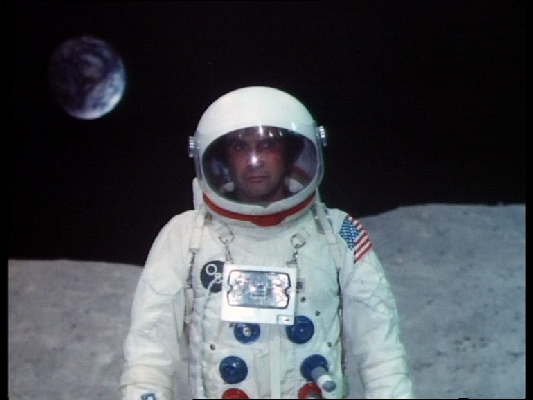
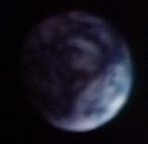
Figure 5.6.5: Screenshots from ‘Countdown’ showing the view back to Earth after TLI (left) and from the moon (right).
Apart from the technical error in the lunar image (the surface can’t be fully lit by Earth and have a full moon at the same time), and the ingenious method of simulating lunar gravity (by basically not bothering), the real issue here is the lack of anything remotely resembling Earth in the view of Earth. Without any clear idea of what it should like, they’ve opted for a bland, vague, ‘’kind of sort of like this’ look for our brilliant blue planet.
Later that year we have perhaps the most famous space scenes at the time of Apollo belong to those shot for Stanley Kubrick’s epic ‘2001: A Space Odyssey’. Kubrick was famed for his attention to detail, so if anyone was going to get it right he would surely?
Kubrick’s shots of Earth were done by creating transparencies from artwork (see here for more info) and then back lighting those so that the Earth had the appropriate albedo -
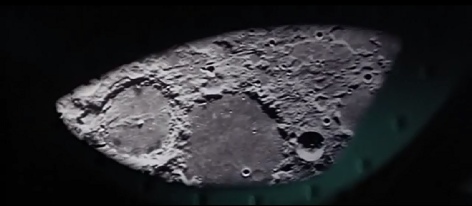
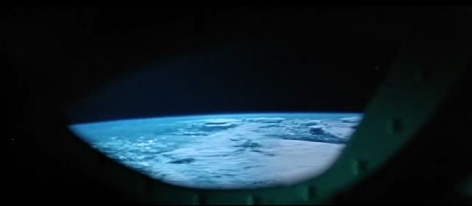
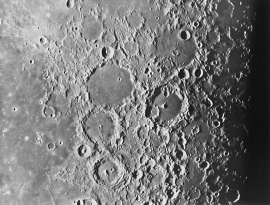
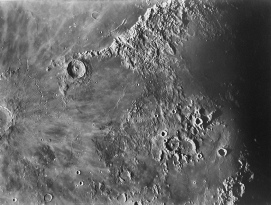
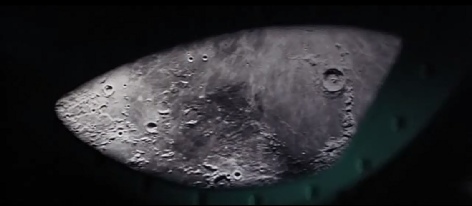
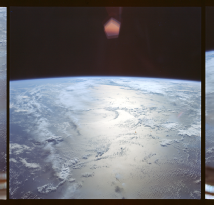
Figure 5.6.4: Screenshots from ‘Countdown’ compared with Gemini image S65-
So far so good, but once they try and look back at Earth, something not attempted outside LEO when the film was being made, then things start to look a little more shaky, as shown in figure 5.6.5.
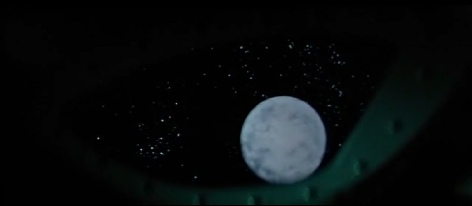
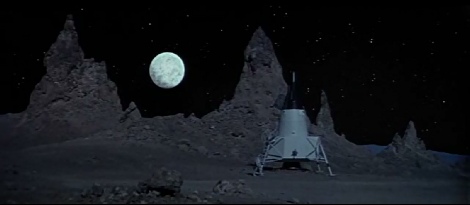
Just 7 years after the Blue Marble and this is the best a supposed co-
Things were just as bad in in 1980’s Superman II, where the moon sequence shows an Earth in the background that is extremely well lit to say that the sun is behind it (figure 5.6.15).
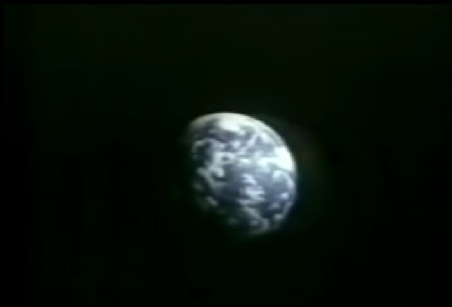
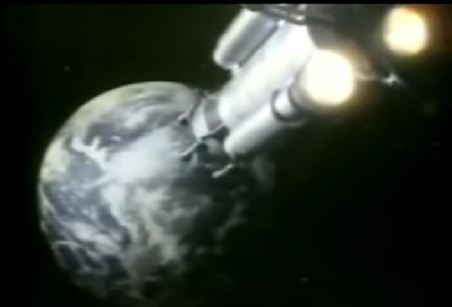
Figure 5.6.13: Screenshots from ‘Salvage 1’ showing a reproduction Earth.
Another one from 1979 is the truly dreadful ‘Unidentified Flying Oddball’, which masqueraded under a couple of other names depending on when and in which country you were unfortunate to see it, and which is an appalling adaptation of the Mark Twain story ‘A Connecticut Yankee in King Arthur’s Court’. Ironically it’s a Disney film, ironic given the hoohaa some conspiracy nutjobs make over Disney’s alleged link with the Apollo missions. Here’s their view of Earth from the film (figure 5.6.14).
Figure 5.6.9b: Selected screenshots from Moon Zero Two -
Once again Earth is there to look pretty, but I guess paying for the rights to use NASA images were expensive.
A couple of years on from You Only Live Twice, Bond revisited space -
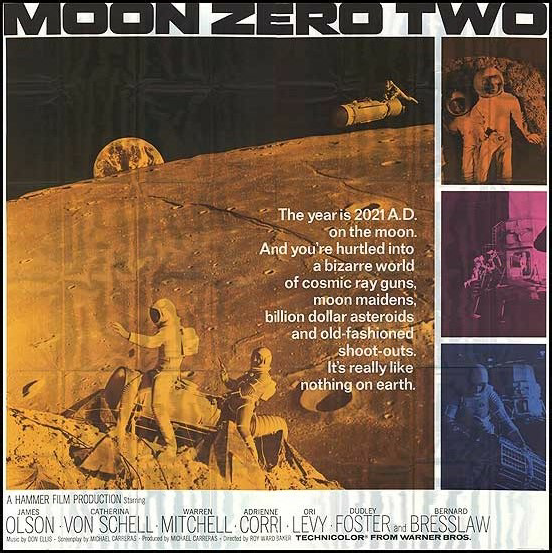

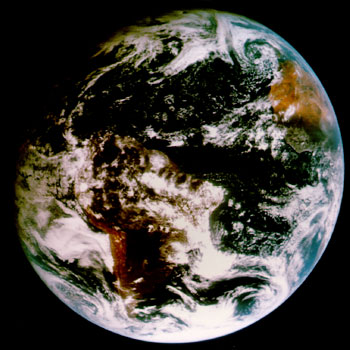
Figure 5.6.9a: Promotional poster for Moon Zero Two, AS08-
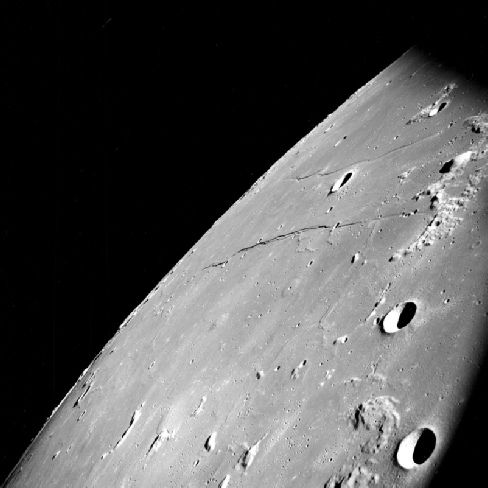
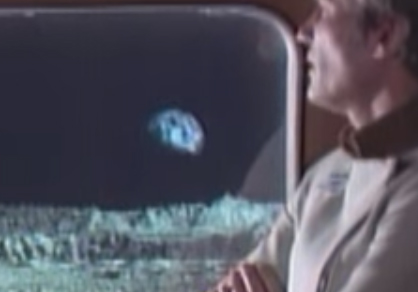
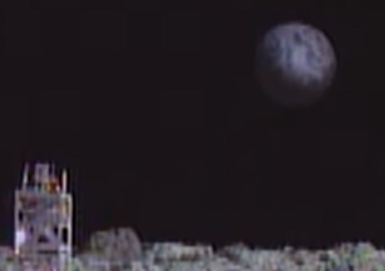
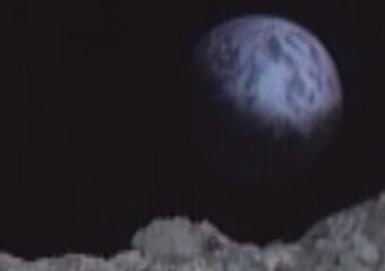
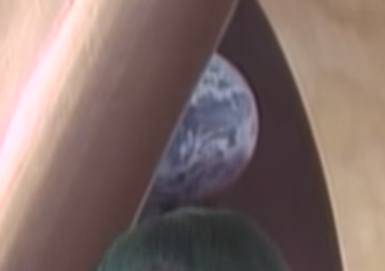
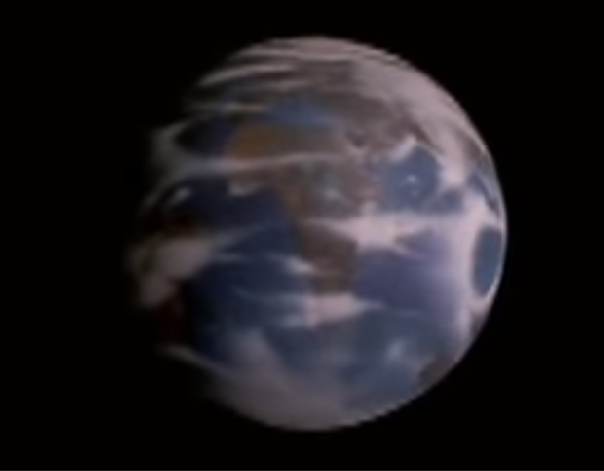
Figure 5.6.14: Earth as seen in ‘Undentified Flying Oddball’.